Lebanon economic recovery postponed
4 June 2024

The visit to Lebanon by the IMF in May reveals a stark picture of an economy now in its fifth year of intense turmoil following its October 2019 exchange rate collapse, and one which now faces significant additional headwinds.
The IMF’s end-of-mission statement identified a lack of action on economic reforms as exerting a heavy economic toll, while flagging negative spillovers from fighting on the country’s southern border as an exacerbating factor for the already dire economic and social situation.
Yet, despite this apparent dismal assessment, Lebanon can legitimately claim to have turned a corner last year.
Implementing monetary and fiscal reforms has seen the phasing out of monetary financing, the termination of the electronic foreign exchange platform, tighter fiscal policy, and steps towards the unification of exchange rates.
These measures have helped contain exchange rate depreciation, stabilise the money supply and reduce inflationary pressure, the IMF said.
Nassib Ghobril, chief economist at Beirut-based Byblos Bank, agrees. “Last year was a very good year for Lebanon, the first year where the economy was on track to post a positive growth rate since 2017,” he says.
After the first nine months of 2023, Ghobril’s forecast for real GDP growth was 2%, driven by stellar tourism activity that so far that year had produced knock-on benefits for 14 sub-sectors, in addition to improved activity in the wider industrial, agricultural and services sectors.
“And then 7 October and 8 October happened, and that created a shock that put a hold on this momentum — and that’s continuing,” he says.
Contingent growth
Lebanon’s economic outlook now hinges largely on the outcome of the conflict in Gaza and the related violence between Hezbollah and the Israeli Defence Forces, which has forced widespread displacement of the southern population, besides disrupting agriculture and tourism.
Looking ahead, Ghobril predicts a continuation of the current status quo, which would result in a real GDP contraction of 0.5-1% in 2024, at 40% probability. If the conflict expands – also a 40% probability – then it could realise a more serious contraction of 15-20%.
On the other hand, says Ghobril, in a ceasefire scenario, which he puts at 20% probability, “the sooner it happens, we would have a rebound in growth based on the positive shock, the reconstruction of the south and better visibility”.
Tourism revival, important to Lebanon as a hard currency generator, is highly contingent on a stable security situation, even beyond the southern areas most impacted by the fighting.
Minister of Economy and Trade Amin Salam warned in February that it was unclear if visitors from the Lebanese diaspora and elsewhere, who injected about $5-7bn into the economy last summer, would come to the country this season. In Q1 2024, total passenger numbers at Beirut International airport decreased by 6.7% in year-on-year terms to 1.27 million, according to Banque Audi figures.
The conflict’s direct impact on the south has been stark. According to Banque Audi, more than 6,000 acres of forest and agricultural land have been damaged, up to 2,100 acres completely burned, and more than 60,000 olive trees destroyed.
Meanwhile, an estimated 93,000 people have been internally displaced, contributing to an estimated 75% decline in economic activity in the south. The sense that the Israel-Hamas war has stunted Lebanon’s recovery is hard to avoid, rolling back the progress seen in 2023.
Fiscal stabilisation
The IMF has nevertheless lauded the government’s measures to boost revenue collection from VAT and customs, which it said helped close the fiscal deficit to zero last year.
“Looking ahead, we anticipate the fiscal balance to remain close to zero in 2024, on limited financing options and improved revenue collection permitted by the exchange rate adjustment on custom duties and VAT. CPI inflation is expected to stabilise on lower unsterilised interventions of Banque du Liban,” says Thomas Garreau, an analyst at Fitch Ratings.
Balancing current spending looked to be within reach. The government’s budgeted figures for 2024 envisage public spending amounting to $3.4bn, matched by public revenues of $3.4bn, despite an increase in public sector wages of $40m a month.
Exchange rate stabilisation is a clear win for Lebanon. The pound has been stable at £Leb89,500 to the dollar since the end of July 2023 despite multiple security incidents not related to the conflict in the south of the country.
“That’s still ongoing because the central bank managed last year to sterilise liquidity and Lebanese pounds from the market to reduce the differential between the quasi-official exchange rate of the central bank and the parallel market rate, and to stop the speculation on the currency. So it managed to stop the depreciation of the currency,” says Ghobril.
Foreign exchange reserves, which eroded heavily in the post-2019 crisis period, appear to have steadied. The liquid foreign assets of the central Banque du Liban grew by $382m in Q1 2014, reaching $9.6bn.
As Banque Audi notes, the cumulative growth of $1bn in the central bank’s liquid foreign assets since the end of July 2023 is mostly linked to its refraining from any government finance.
Yet the more lasting changes needed to shift the dial on Lebanon’s economic narrative remain elusive.
Bank deposits are frozen, notes the IMF, and the banking sector is unable to provide credit to the economy, as the government and parliament have been unable to find a solution to the sector’s crisis.
Addressing the banks’ losses while protecting depositors is seen as indispensable to economic recovery.
It does not help that the country has been without a president since October 2022, leaving caretaker Prime Minister Najib Mikati without a full mandate to undertake reforms.
This matters because banking system recovery hinges on political will to implement reforms. Yet the vacuum at the presidential palace leaves little prospect of imminent progress on this front.
“Despite some politicians’ comments, I do not see prospects of an end to the political deadlock as long as the war is ongoing in the south. And even if it suddenly stopped, you would need several months for an overall settlement to materialise on the domestic political front,” says Ghobirl.
The present situation leaves Lebanon politically and economically hobbled, with fears of worse to come due to external events beyond its control.
Exclusive from Meed
-
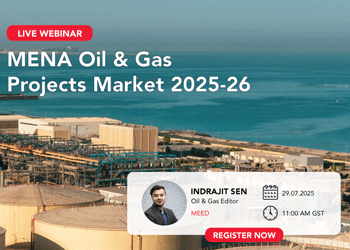 WEBINAR: Mena Oil & Gas Projects Market 2025-26
WEBINAR: Mena Oil & Gas Projects Market 2025-2610 July 2025
-
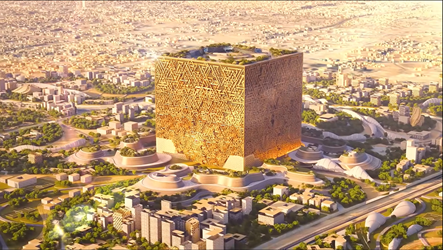
-
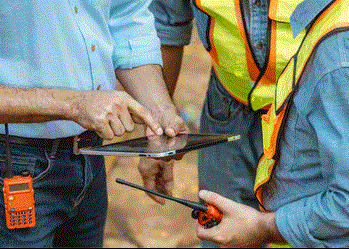 Chinese firm wins Mid Island Parkway tunnelling deal
Chinese firm wins Mid Island Parkway tunnelling deal10 July 2025
-
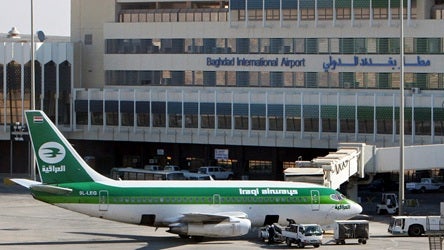 Iraq tenders Baghdad airport PPP project
Iraq tenders Baghdad airport PPP project9 July 2025
-
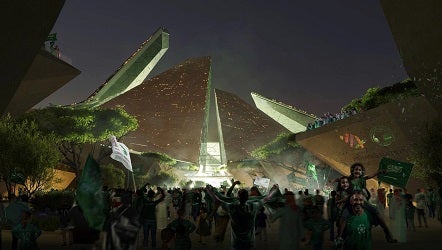
All of this is only 1% of what MEED.com has to offer
Subscribe now and unlock all the 153,671 articles on MEED.com
- All the latest news, data, and market intelligence across MENA at your fingerprints
- First-hand updates and inside information on projects, clients and competitors that matter to you
- 20 years' archive of information, data, and news for you to access at your convenience
- Strategize to succeed and minimise risks with timely analysis of current and future market trends

Related Articles
-
 WEBINAR: Mena Oil & Gas Projects Market 2025-26
WEBINAR: Mena Oil & Gas Projects Market 2025-2610 July 2025
Date & Time: Tuesday 29 July 2025 | 11:00 AM GST
Agenda:
1. Summary of the Mena oil, gas and petrochemicals projects market
2. Summary description of the main megaprojects, including project programmes
3. Analysis of active contracts and spending to date
4. Analysis of top contracts by work already awarded
5. Long-term capital expenditure outlays and forecasts
6. Highlights of key contracts to be tendered and awarded over the next 18 months
7. Top contractors and clients
8. Breakdown of spending by segment, ie, oil, gas, petrochemicals – upstream, downstream, onshore and offshore
9. Q&A session
https://image.digitalinsightresearch.in/uploads/NewsArticle/14241705/main.gif -
 New Murabba signs up South Korean firm for design works
New Murabba signs up South Korean firm for design works10 July 2025
Register for MEED’s 14-day trial access
Saudi Arabia’s New Murabba Development Company (NMDC) has signed a memorandum of understanding (MoU) with South Korea’s Heerim Architects & Planners to explore further design works on assets at the 14 square-kilometre New Murabba downtown project.
According to an official statement: “Heerim Architects & Planners will explore distinctive architectural plans that complement the development’s masterplan, with special focus on anchor assets, linear parks and smart city features.”
New Murabba CEO Michael Dyke signed the agreement last week during the company’s Investment and Partnership Forum in Seoul.
At the event, NMDC also signed an MoU with South Korea’s Naver Cloud Corporation to explore technological solutions for delivering the New Murabba downtown project.
According to an official statement: “The three-year agreement covers exploring innovative technology and automation to support the delivery of New Murabba, including robotics, autonomous vehicles, a smart city platform and digital solutions for monitoring construction progress.”
NMDC is in Seoul to examine technological offerings, assess financing options and showcase the investment opportunities available for the New Murabba downtown development.
The statement added that the excavation works for The Mukaab, the centrepiece of the overall development, have now been completed.
The Mukaab is a Najdi-inspired landmark that will be one of the largest buildings in the world. It will be 400 metres high, 400 metres wide and 400 metres long. Internally, it will have a tower on top of a spiral base and a structure featuring 2 million square metres (sq m) of floor space designated for hospitality. It will feature commercial spaces, cultural and tourist attractions, residential and hotel units, and recreational facilities.
Downtown destination
The New Murabba destination will have a total floor area of more than 25 million sq m and feature more than 104,000 residential units, 9,000 hotel rooms and over 980,000 sq m of retail space.
The scheme will include 1.4 million sq m of office space, 620,000 sq m of leisure facilities and 1.8 million sq m of space dedicated to community facilities.
The project will be developed around the concept of sustainability and will include green spaces and walking and cycling paths to promote active lifestyles and community activities.
The living, working and entertainment facilities will be developed within a 15-minute walking radius. The area will use an internal transport system and will be about a 20-minute drive from the airport.
The downtown area will feature a museum, a technology and design university, an immersive, multipurpose theatre, and more than 80 entertainment and cultural venues.
 READ THE JULY 2025 MEED BUSINESS REVIEW – click here to view PDF
READ THE JULY 2025 MEED BUSINESS REVIEW – click here to view PDFUAE and Turkiye expand business links; Renewed hope lies on the horizon for trouble-beset Levant region; Gulf real estate momentum continues even as concerns emerge
Distributed to senior decision-makers in the region and around the world, the July 2025 edition of MEED Business Review includes:
> AGENDA: UAE-Turkiye trade gains momentum> INTERVIEW 1: Building on UAE-Turkiye trade> INTERVIEW 2: Turkiye's Kalyon goes global> INTERVIEW 3: Strengthening UAE-Turkiye financial links> INTERVIEW 4: Turkish Airlines plans further growth> CURRENT AFFAIRS: Middle East tensions could reduce gas investments> GCC REAL ESTATE: Gulf real estate faces a more nuanced reality> PROJECTS MARKET: GCC projects market collapses> INTERVIEW 5: Hassan Allam eyes role in Saudi Arabia’s transformation> INTERVIEW 6: Aseer region seeks new investments for Saudi Arabia> LEADERSHIP: Nuclear power makes a global comeback> LEVANT MARKET FOCUS: Levant states wrestle regional pressures> GULF PROJECTS INDEX: Gulf projects index continues climb> CONTRACT AWARDS: Mena contract award activity remains subdued> ECONOMIC DATA: Data drives regional projects> OPINION: A farcical tragedy that no one can endTo see previous issues of MEED Business Review, please click herehttps://image.digitalinsightresearch.in/uploads/NewsArticle/14239016/main.jpg -
 Chinese firm wins Mid Island Parkway tunnelling deal
Chinese firm wins Mid Island Parkway tunnelling deal10 July 2025

Register for MEED’s 14-day trial access
Beijing-headquartered China Railway Tunnel Engineering Group has won a $60m subcontract for the tunnelling works on package 1B of the Mid Island Parkway project in Abu Dhabi.
Package 1B entails the construction of a cut-and-cover tunnel to cross the Khor Laffan Channel, which is the area between the Saadiyat and Um-Yifeenah islands.
The tunnel, which will be between 900 metres and 1 kilometre (km) long, is being constructed on a design-and-build basis and will tie in to packages 1A and 1C.
The project is being jointly constructed by a joint venture of local firm Yas Projects (Alpha Dhabi Holding) and Beijing-based China Railway International Group.
In June last year, MEED exclusively reported that Abu Dhabi's Department of Municipality & Transport had awarded contracts for three packages for phase one of the Mid Island Parkway Project (MIPP), as part of the Plan Capital urban evolution programme.
Phase one will start at the existing Saadiyat Interchange, which will connect the E12 road to the MIPP, and will end with the recently constructed Um-Yifeenah Highway.
It comprises a dual main road with a total length of 8km, including four traffic lanes in each direction, two interchanges, a tunnel and associated infrastructure works.
MIPP phase one is further divided into packages 1A, 1B and 1C, which were awarded separately.
The project ownership has been transferred from Aldar Properties to Abu Dhaibi's Department of Municipalities & Transport.
Previously, it was transferred from Abu Dhabi General Services Company (Musanada) to Aldar Properties, and the project was included in the Abu Dhabi Investment Office's public-private partnership project pipeline.
 READ THE JULY 2025 MEED BUSINESS REVIEW – click here to view PDF
READ THE JULY 2025 MEED BUSINESS REVIEW – click here to view PDFUAE and Turkiye expand business links; Renewed hope lies on the horizon for trouble-beset Levant region; Gulf real estate momentum continues even as concerns emerge
Distributed to senior decision-makers in the region and around the world, the July 2025 edition of MEED Business Review includes:
> AGENDA: UAE-Turkiye trade gains momentum> INTERVIEW 1: Building on UAE-Turkiye trade> INTERVIEW 2: Turkiye's Kalyon goes global> INTERVIEW 3: Strengthening UAE-Turkiye financial links> INTERVIEW 4: Turkish Airlines plans further growth> CURRENT AFFAIRS: Middle East tensions could reduce gas investments> GCC REAL ESTATE: Gulf real estate faces a more nuanced reality> PROJECTS MARKET: GCC projects market collapses> INTERVIEW 5: Hassan Allam eyes role in Saudi Arabia’s transformation> INTERVIEW 6: Aseer region seeks new investments for Saudi Arabia> LEADERSHIP: Nuclear power makes a global comeback> LEVANT MARKET FOCUS: Levant states wrestle regional pressures> GULF PROJECTS INDEX: Gulf projects index continues climb> CONTRACT AWARDS: Mena contract award activity remains subdued> ECONOMIC DATA: Data drives regional projects> OPINION: A farcical tragedy that no one can endTo see previous issues of MEED Business Review, please click herehttps://image.digitalinsightresearch.in/uploads/NewsArticle/14238039/main3047.gif -
 Iraq tenders Baghdad airport PPP project
Iraq tenders Baghdad airport PPP project9 July 2025
Register for MEED’s 14-day trial access
Iraq’s Ministry of Transport and the General Company for Airport & Air Navigation Services have released a tender inviting firms to bid for a contract to develop Baghdad International airport on a public-private partnership (PPP) basis.
The notice was issued in July, and the submission deadline is in September.
According to an official statement posted on its website, Iraq’s Ministry of Transport said that 10 out of 14 international consortiums that expressed interest in the project earlier this year have been prequalified to compete for the tender.
The scope of the estimated $400m-$600m project involves rehabilitating, expanding, financing, operating and maintaining the airport. It is the first airport PPP project to be launched in Iraq.
The initial capacity of the airport is expected to be around 9 million passengers, which will be gradually increased to 15 million passengers.
The International Finance Corporation (IFC), a member of the World Bank Group, is the project’s lead transaction adviser.
Iraq is already developing the Baghdad and Najaf-Karbala metro projects using a similar PPP model.
Earlier this month, MEED reported that Iraq intends to retender the contract to develop and operate the Baghdad Metro project, following the award of the estimated $2.5bn contract last year.
According to local media reports, Nasser Al-Assadi, adviser to Prime Minister Mohammed Sudani, stated that the previous developers had overestimated the project budget; therefore, the government will relaunch the entire process to implement the project.
https://image.digitalinsightresearch.in/uploads/NewsArticle/14229008/main.jpg -
 Contractors prepare revised bids for Roshn stadium
Contractors prepare revised bids for Roshn stadium9 July 2025

Register for MEED’s 14-day trial access
Saudi gigaproject developer Roshn has invited firms to submit revised commercial proposals by 24 July for a contract to build a new stadium adjacent to the National Guard facilities to the southwest of Riyadh.
Known as the National Guard Stadium, it will be delivered on an early contractor involvement (ECI) basis. It will cover an area of over 450,000 square metres and be able to accommodate 46,000 spectators.
The scope of work also covers the construction of auxiliary facilities, including training academy offices and two hotels, as well as retail and food and beverage outlets.
The firms had initially submitted bids on 8 April for the contract.
The stadium is scheduled to host 32 Fifa World Cup tournament games in 2034.
In August last year, MEED reported that Saudi Arabia plans to build 11 new stadiums as part of its bid to host the 2034 Fifa World Cup.
Eight stadiums will be located in Riyadh, four in Jeddah and one each in Al-Khobar, Abha and Neom.
The proposal outlines an additional 10 cities that will host training bases. These are Al-Baha, Jazan, Taif, Medina, Al-Ula, Umluj, Tabuk, Hail, Al-Ahsa and Buraidah.
The bid proposes 134 training sites across the kingdom, including 61 existing facilities and 73 new training venues.
The kingdom was officially selected to host the 2034 Fifa World Cup through an online convention of Fifa member associations at the Fifa congress on 11 December 2024.
 https://image.digitalinsightresearch.in/uploads/NewsArticle/14228507/main.jpg
https://image.digitalinsightresearch.in/uploads/NewsArticle/14228507/main.jpg

